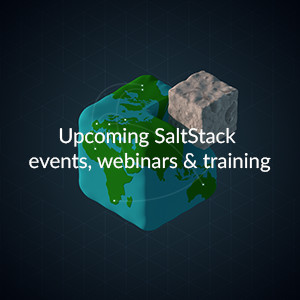salt.modules.s3¶
Connection module for Amazon S3
| configuration: | This module accepts explicit s3 credentials but can also utilize IAM roles assigned to the instance trough Instance Profiles. Dynamic credentials are then automatically obtained from AWS API and no further configuration is necessary. More Information available at: http://docs.aws.amazon.com/AWSEC2/latest/UserGuide/iam-roles-for-amazon-ec2.html
If IAM roles are not used you need to specify them either in a pillar or in the minion's config file: s3.keyid: GKTADJGHEIQSXMKKRBJ08H
s3.key: askdjghsdfjkghWupUjasdflkdfklgjsdfjajkghs
A service_url may also be specified in the configuration: s3.service_url: s3.amazonaws.com
If a service_url is not specified, the default is s3.amazonaws.com. This may appear in various documentation as an "endpoint". A comprehensive list for Amazon S3 may be found at: http://docs.aws.amazon.com/general/latest/gr/rande.html#s3_region
The service_url will form the basis for the final endpoint that is used to query the service. SSL verification may also be turned off in the configuration: s3.verify_ssl: False This is required if using S3 bucket names that contain a period, as these will not match Amazon's S3 wildcard certificates. Certificate verification is enabled by default. This module should be usable to query other S3-like services, such as Eucalyptus. |
|---|---|
| depends: | requests |
-
salt.modules.s3.delete(bucket, path=None, action=None, key=None, keyid=None, service_url=None, verify_ssl=None)¶ Delete a bucket, or delete an object from a bucket.
CLI Example to delete a bucket:
salt myminion s3.delete mybucket
CLI Example to delete an object from a bucket:
salt myminion s3.delete mybucket remoteobject
-
salt.modules.s3.get(bucket=None, path=None, return_bin=False, action=None, local_file=None, key=None, keyid=None, service_url=None, verify_ssl=None)¶ List the contents of a bucket, or return an object from a bucket. Set return_bin to True in order to retrieve an object wholesale. Otherwise, Salt will attempt to parse an XML response.
CLI Example to list buckets:
salt myminion s3.get
CLI Example to list the contents of a bucket:
salt myminion s3.get mybucket
CLI Example to return the binary contents of an object:
salt myminion s3.get mybucket myfile.png return_bin=True
CLI Example to save the binary contents of an object to a local file:
salt myminion s3.get mybucket myfile.png local_file=/tmp/myfile.png
It is also possible to perform an action on a bucket. Currently, S3 supports the following actions:
acl cors lifecycle policy location logging notification tagging versions requestPayment versioning website
To perform an action on a bucket:
salt myminion s3.get mybucket myfile.png action=acl
-
salt.modules.s3.head(bucket, path=None, key=None, keyid=None, service_url=None, verify_ssl=None)¶ Return the metadata for a bucket, or an object in a bucket.
CLI Examples:
salt myminion s3.head mybucket salt myminion s3.head mybucket myfile.png
-
salt.modules.s3.put(bucket, path=None, return_bin=False, action=None, local_file=None, key=None, keyid=None, service_url=None, verify_ssl=None)¶ Create a new bucket, or upload an object to a bucket.
CLI Example to create a bucket:
salt myminion s3.put mybucket
CLI Example to upload an object to a bucket:
salt myminion s3.put mybucket remotepath local_file=/path/to/file

